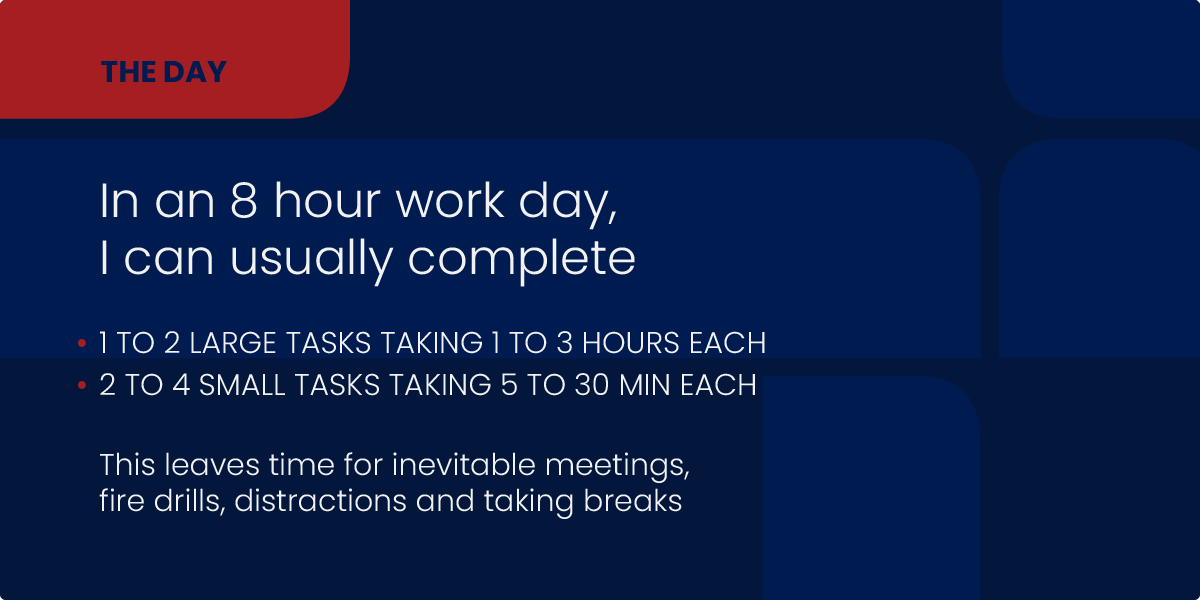But I Need More Time…
Making Time for Creative Thinking
I used to start every day with an overly long list of what I thought needed to get done that day. The day became a race against the clock to cram every task in, cross it off, and end the day with a vague notion that if I did things quickly and efficiently enough, I would be done with everything, forever, and I could sit back to relax until the end of time. Nice try. Instead, I would inevitably end the day having only completed 1 or 2 tasks, added 10 more new items, and would be so confused about how to focus my remaining energy that I felt stalled in one place all the time.
As a way to solve this problem, my grad school mentor suggested that I actively incorporate time management techniques into my creative process. The techniques I use are outlined in the visuals below and are still an important part of my daily practice. Continuing to use them has helped me to avoid creative burnout multiple times at multiple jobs; they also play an important role when I am planning, budgeting and managing teams on a design project.
Time as a concept may feel infinite, but each of our individual time is finite, we only have so many hours in a day. When I am thinking how to structure my day or week, it helps me to use the parameters above for what can realistically get done. For example, having a day that is mostly meetings means I probably only have time for focusing on one large task or multiple small tasks. And if I end up having extra time even after I complete everything for the day? Great! I can take a break and recharge or squeeze in one more thing depending on how I feel.
This is as important to do in the conceptual stages of a project as it is in production or CA. In the conceptual stage, having clarity can provide definition to open ended creative tasks that can eat up time and budget (think “Create 5-10 logo sketches that include/are in the style of [blank]” rather than “Sketch logo options”). At any project stage, having the process broken down into smaller components can make it possible to switch gears and delegate to other team members.
Over the years, I have learned the most from this step - having a written record of priorities and estimated time reinforces that I am working within a finite amount of time, gives me a tangible reminder when I get distracted and need to refocus, and also can be a way to give myself permission to spend more time on something.
There are lots of other great time management strategies out there - here are links to a few:
Thank you for your time to read. I would love to hear from you about any time management strategies you find helpful in your daily life.
#creativeprocess #creativethinking #timemanagment #effectivehabits




